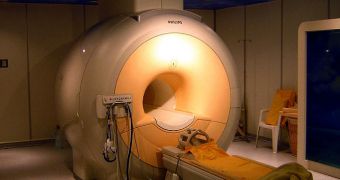For many years, a large number of experts have argued that repeated exposures to radiation may be be associated with an increased risk of developing cancer for the general public. The US National Institutes of Health (NIH) have recently decided to engage in a new study that will seek to gauge this risk, based partially on the history of radiation exposure that people get from being subjected to medical imaging techniques such as computer tomography (CT) and magnetic resonance imaging (MRI). The work will be conducted by experts at the NIH Clinical Center, e! Science News reports.
All reports related to the radiation-dose exposure will be included in the electronic medical record, the officials announce, which is a method of providing researchers with direct access to relevant data and possible statistical correlations between radiation exposure and cancer risks. Details of the planned investigation have been published in the February issue of the respected Journal of the American College of Radiology (JACR). Usually, the medical record is a tool that allows healthcare experts and doctors a direct access to a patient's medical history, so that the specialists can make informed decisions on, for example, courses of treatment.
“One widely publicized appraisal of medical radiation exposure suggested that about 1.5 to 2 percent of all cancers in the USA might be caused by the clinical use of CT alone. Since there is no epidemiologic data directly relating CT scanning to cancer deaths, scientific assessment must instead rely on the relationship between radiation exposure and death rates from Japanese atomic bomb survivors. While the legitimacy of this approach remains debated, radiologists as well as clinicians may rightfully be confused by the ongoing controversy. Patients seeking medical help may legitimately question the rationale of, and any risks from, diagnostic radiology tests,” the Director of the NIH Clinical Center Radiology and Imaging Sciences, David A. Bluemke, MD, explains.
The expert is also the lead author of the new paper. He adds that the NIH has developed a radiation-reporting policy that it plans to implement with all major equipment vendors dealing in radiology and nuclear medicine. “All vendors who sell imaging equipment to Radiology and Imaging Sciences at the NIH Clinical Center will be required to provide a routine means for radiation dose exposure to be recorded in the electronic medical record. This requirement will allow cataloging of radiation exposures from these medical tests,” Bluemke adds.
In addition, this tool will also provide patients with the necessary data to keep track of their own radiation history, which is something that the American College of Radiology and the Radiological Society of North America strongly recommend. If people are always aware of the amount of radiation they expose themselves to, then they could opt to voluntarily limit it, except in cases of emergency.

 14 DAY TRIAL //
14 DAY TRIAL //